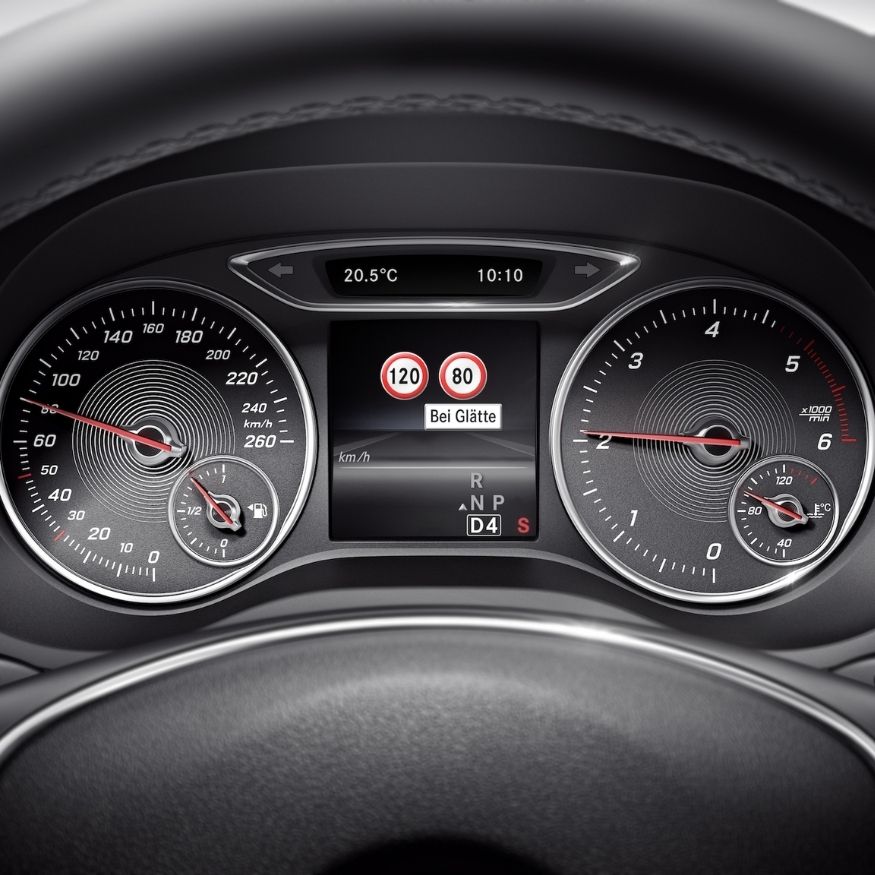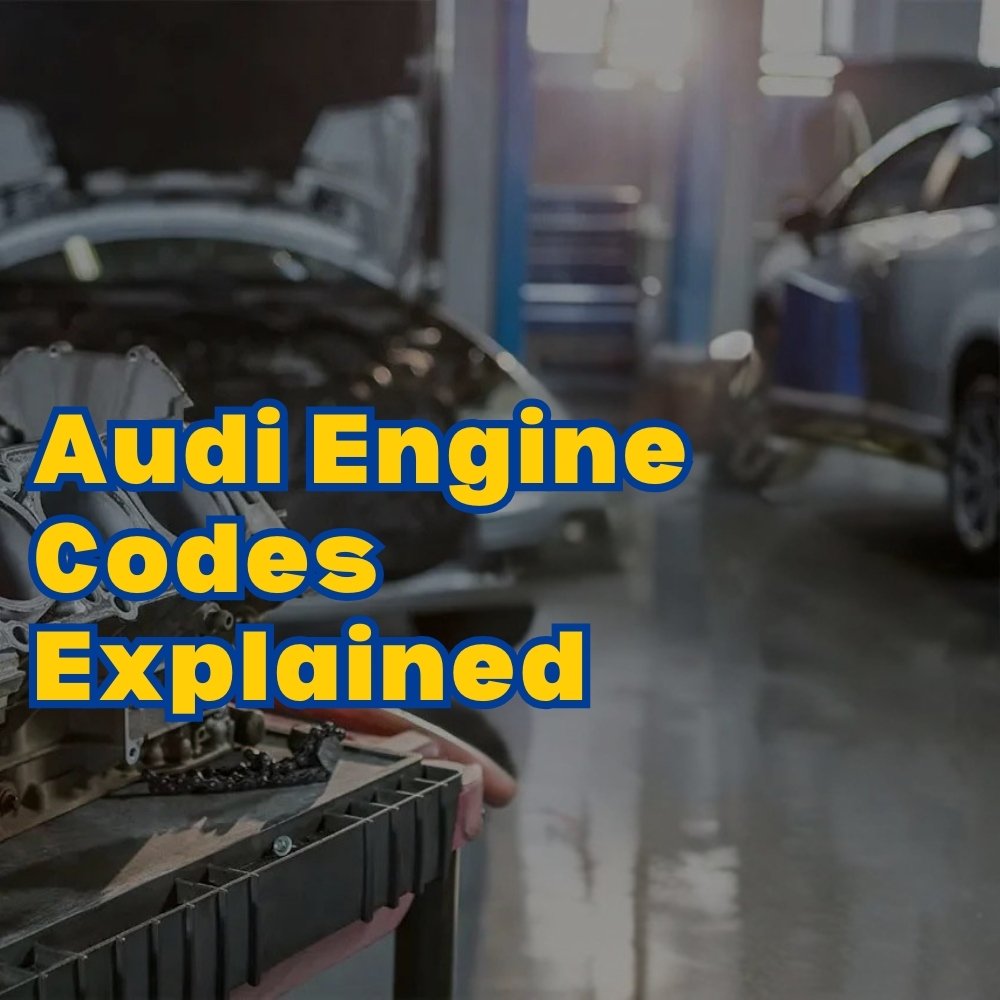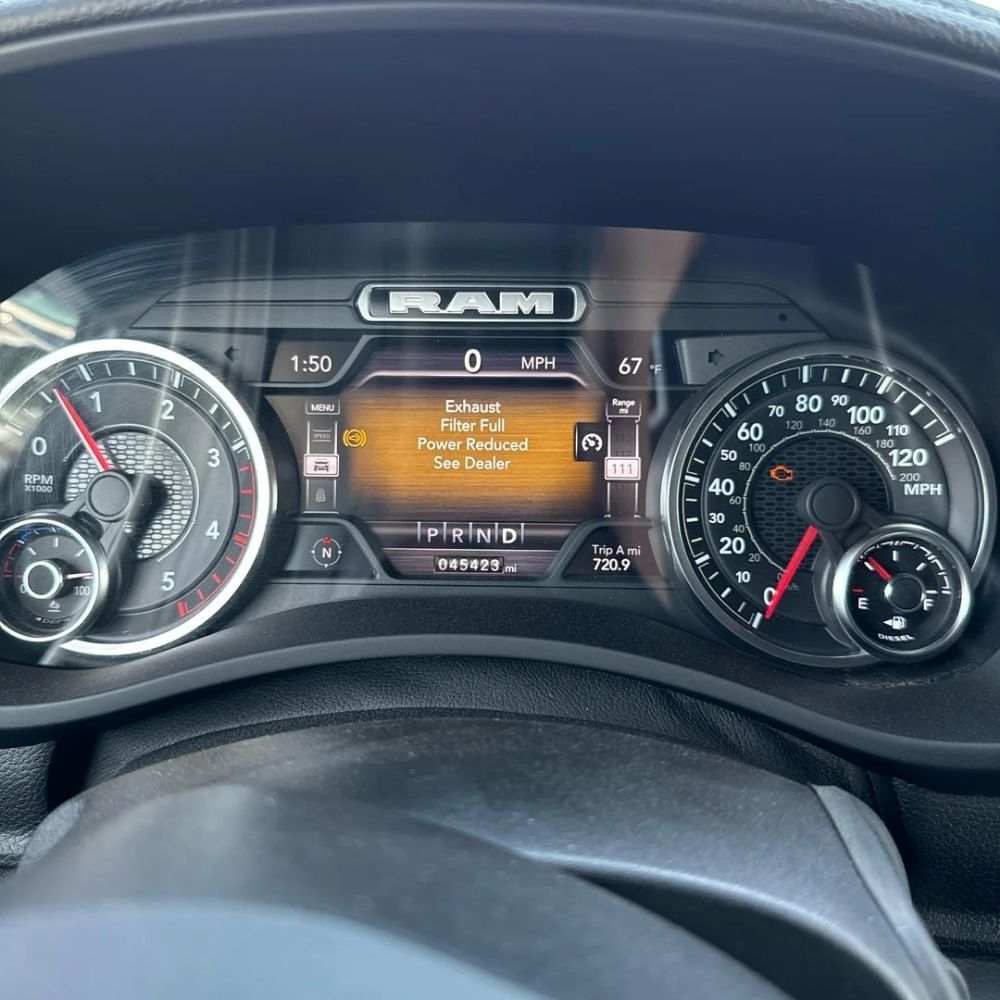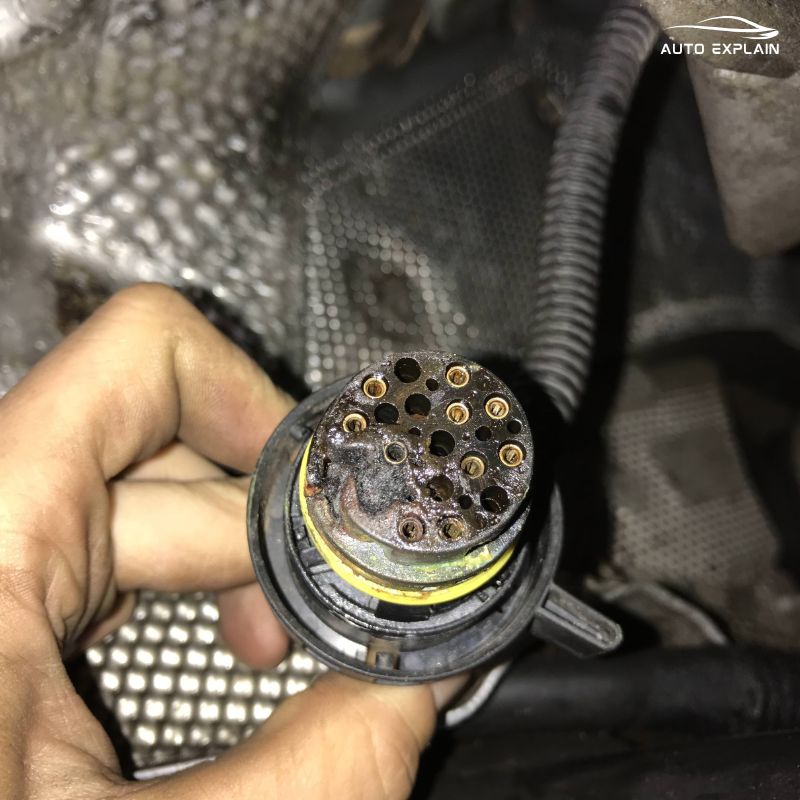

Audi Engine Codes Explained: Your Ultimate Guide to Decoding
Audi Engine Codes Explained can be simple once you understand the system, and AutoExplain is here to help decode them, ensuring you know exactly what powers your vehicle. This guide provides a comprehensive breakdown, empowering owners, technicians, and workshops with the knowledge to confidently navigate Audi’s engine specifications. Explore engine types, power outputs, and coding intricacies to enhance your automotive expertise and maintenance practices.
1. What Do Audi Engine Codes Mean?
Audi engine codes are alphanumeric designations that specify engine characteristics like power output and fuel type, which assists technicians in identifying the correct engine for diagnostics and repairs. These codes, such as “35 TFSI,” provide essential information for maintenance and performance optimization.
To expand, let’s explore the history, composition, and significance of Audi engine codes.
1.1. Historical Context
Before 2017, Audi used a simpler numerical system based on engine displacement (e.g., 2.0 for a 2.0-liter engine). However, this system became inadequate as engine technology advanced. Turbocharging and other efficiency enhancements allowed smaller engines to produce more power than larger, naturally aspirated ones. According to a 2018 SEMA (Specialty Equipment Market Association) report, the industry recognized the need for a more relevant method of classification that reflects actual engine performance rather than just displacement.
1.2. The New System (2017 Onward)
In autumn 2017, Audi transitioned to a new system based on power output, aiming to provide a more accurate representation of an engine’s capabilities. This system uses a combination of numbers and letters:
- Numbers (e.g., 30, 35, 40): Indicate the power range of the engine. Higher numbers generally correlate with higher power output.
- Letters (e.g., TFSI, TDI, e-tron): Denote the engine type (fuel type and technology).
1.3. Composition of Audi Engine Codes
- TFSI: Turbo Fuel Stratified Injection, indicating a turbocharged petrol engine.
- TDI: Turbocharged Direct Injection, representing a turbocharged diesel engine.
- e-tron: Denotes an electric or plug-in hybrid powertrain.
For instance, in the code “40 TFSI,” the “40” signifies the engine’s power range, and “TFSI” indicates that it is a turbocharged petrol engine. This system allows for a more intuitive understanding of an engine’s capabilities, aligning with modern automotive advancements.
1.4. Importance for Technicians and Owners
Understanding Audi engine codes is crucial for several reasons:
- Accurate Diagnostics: Technicians can quickly identify the engine type and power output to perform accurate diagnostics and repairs.
- Correct Parts Selection: Ensures the correct parts are selected for maintenance and repairs, avoiding compatibility issues.
- Performance Optimization: Owners can use this information to understand their engine’s capabilities and potential upgrades.
- Resale Value: Accurate engine information can enhance the vehicle’s description and value during resale.
According to ASE (Automotive Service Excellence), correct identification of engine specifications is one of the fundamental steps in automotive repair.
1.5. Decoding the Numbers
The numerical part of the engine code represents a power range rather than a specific horsepower figure. Here’s a general guide to understanding these numbers:
| Badge | Power Output (hp) |
|---|---|
| 25 | Less than 100 |
| 30 | 110-120 |
| 35 | 150 |
| 40 | 190-210 |
| 45 | 230-270 |
| 50 | 280-300 |
| 55 | 360-385 |
| 60 | More than 400 |
It’s important to note that these are approximate ranges, and the actual power output may vary slightly depending on the specific model and engine tuning. For example, an Audi A3 40 TFSI may have a different power output than an Audi A5 40 TFSI.
2. Common Audi Engine Codes and Their Meanings
What are the prevalent Audi engine codes, and what do they tell you about the vehicle’s performance and capabilities? We’ll explore various engine codes, dissecting their components to provide a clear understanding of what each code represents.
2.1. TFSI Engines
TFSI (Turbo Fuel Stratified Injection) engines are petrol engines that combine direct fuel injection with turbocharging to enhance power and efficiency. Here are some common TFSI engine codes:
- 30 TFSI: Typically found in smaller models like the Audi A1 and A3, this engine produces around 110-120 hp. It’s often a 1.0-liter three-cylinder engine.
- 35 TFSI: A popular choice for models like the A3, A4, and Q3, this engine delivers approximately 150 hp. It is often a 1.5-liter four-cylinder engine.
- 40 TFSI: Used in a range of models including the A3, A4, A5, and A6, this engine produces between 190 and 210 hp. It is typically a 2.0-liter four-cylinder engine.
- 45 TFSI: Found in larger models such as the A4, A5, A6, and Q5, this engine generates around 230-270 hp. It is generally a 2.0-liter four-cylinder engine.
- 55 TFSI: Common in high-performance models like the A6, A7, A8, Q7, and Q8, this engine produces approximately 340 hp. It is usually a 3.0-liter V6 engine.
2.2. TDI Engines
TDI (Turbocharged Direct Injection) engines are diesel engines known for their fuel efficiency and torque. Common TDI engine codes include:
- 30 TDI: Found in models like the A3 and Q2, this engine produces around 110-120 hp. It is typically a 2.0-liter four-cylinder engine.
- 35 TDI: Used in models such as the A3, A4, A5, and Q3, this engine delivers approximately 150 hp. It is often a 2.0-liter four-cylinder engine.
- 40 TDI: Common in models like the A4, A5, A6, and Q5, this engine produces between 190 and 210 hp. It is typically a 2.0-liter four-cylinder engine.
- 45 TDI: Found in larger models like the A6, A7, and Q7, this engine generates around 230-245 hp. It is generally a 3.0-liter V6 engine.
- 50 TDI: Used in high-performance diesel models like the A6, A7, A8, Q7, and Q8, this engine produces approximately 286 hp. It is usually a 3.0-liter V6 engine.
2.3. E-Tron Engines
E-Tron engines are electric or plug-in hybrid powertrains, representing Audi’s commitment to electric mobility. Common e-tron engine codes include:
- 35 e-tron: Used in electric models like the Q4 e-tron, this engine produces around 125 kW (168 hp).
- 40 e-tron: Found in electric models such as the Q4 e-tron, this engine delivers approximately 150 kW (201 hp).
- 50 e-tron: Common in electric models like the Q4 e-tron and e-tron SUV, this engine produces around 220 kW (295 hp).
- 55 e-tron: Used in high-performance electric models like the e-tron SUV, this engine produces approximately 300 kW (402 hp).
- 60 TFSI e: Found in plug-in hybrid models like the A8 and Q7, this powertrain combines a petrol engine with an electric motor to produce around 355-462 hp.
2.4. Specific Examples
To further illustrate, let’s consider a few specific examples:
- Audi A3 35 TFSI: This model features a 1.5-liter turbocharged petrol engine producing approximately 150 hp. It offers a good balance of performance and fuel efficiency, making it a popular choice for everyday driving.
- Audi A4 40 TDI: This model is equipped with a 2.0-liter turbocharged diesel engine producing between 190 and 210 hp. It provides excellent fuel economy and strong torque, making it suitable for long-distance travel.
- Audi Q5 50 TFSI e: This plug-in hybrid SUV combines a 2.0-liter petrol engine with an electric motor, producing a total output of around 299 hp. It offers the benefits of both electric and petrol power, providing efficient and versatile performance.
Understanding these common Audi engine codes allows technicians and owners to quickly identify the engine type, power output, and performance characteristics of their vehicles. This knowledge is essential for accurate diagnostics, maintenance, and performance optimization.
3. How to Find Your Audi Engine Code
Where can you locate the Audi engine code on your vehicle, and what documentation provides this essential information? We’ll guide you through the various locations and resources to quickly find your engine code.
3.1. Vehicle Identification Number (VIN)
The Vehicle Identification Number (VIN) is a unique 17-character code assigned to every vehicle. While the VIN itself doesn’t directly display the engine code, it can be used to retrieve detailed vehicle information, including the engine code, from various databases.
How to Find the VIN:
- Dashboard: Located on the driver’s side dashboard, visible through the windshield.
- Driver’s Side Doorjamb: Printed on a sticker on the driver’s side doorjamb.
- Vehicle Registration: Listed on your vehicle registration documents.
- Insurance Card: Included on your insurance card.
Using the VIN to Find the Engine Code:
- Online VIN Decoder: Use an online VIN decoder tool. These tools are available on many automotive websites and provide detailed information about your vehicle based on the VIN.
- Audi Dealership: Contact your local Audi dealership with the VIN. They can access the vehicle’s specifications and provide the engine code.
- Auto Repair Shops: Reputable auto repair shops often have access to VIN databases and can retrieve the engine code for you.
3.2. Vehicle Data Sticker
Audi vehicles typically have a data sticker containing various vehicle specifications, including the engine code.
Location of the Data Sticker:
- Service Booklet: Inside the front cover of the vehicle’s service booklet.
- Trunk: Under the trunk lining or on the trunk sidewall.
- Engine Compartment: On the underside of the hood or on the engine bay wall.
The data sticker includes various codes and information, with the engine code clearly marked, usually as a three- or four-character alphanumeric code.
3.3. Vehicle Service Booklet
The vehicle service booklet contains essential information about your vehicle, including the engine code.
Location of the Engine Code:
- Front Page: The engine code is often printed on the front page of the service booklet, along with other vehicle details.
- Maintenance Records: The engine code may also be listed in the maintenance records section, especially during initial servicing.
3.4. Engine Block
In some cases, the engine code may be physically stamped on the engine block. However, this can be difficult to locate and access.
Location of the Engine Code on the Engine Block:
- Front of the Engine: Look for a stamped code on the front of the engine block, near the cylinder head.
- Side of the Engine: Check the sides of the engine block for a stamped code.
- Consult a Professional: If you are unsure, consult a professional mechanic to help locate the engine code on the engine block.
3.5. Online Audi Forums and Communities
Online Audi forums and communities can be valuable resources for finding information about your vehicle.
How to Use Online Forums:
- Search: Use the forum’s search function to look for discussions related to your vehicle model and engine code.
- Post a Question: If you can’t find the information, post a question in the forum, providing details about your vehicle, such as the model and year.
- Consult Experts: Experienced forum members and Audi enthusiasts may be able to help you locate the engine code or provide relevant information.
By utilizing these methods, you can efficiently locate your Audi engine code, ensuring you have the correct information for maintenance, repairs, and performance optimization.
4. The Importance of Accurate Engine Code Identification
Why is identifying the correct Audi engine code critical for maintenance, repairs, and performance tuning? We’ll explore the consequences of using incorrect codes and the benefits of accurate identification.
4.1. Maintenance and Repairs
Accurate engine code identification is crucial for proper maintenance and repairs. Using the wrong engine code can lead to several issues:
- Incorrect Parts: Ordering parts based on the wrong engine code can result in receiving incompatible components, leading to delays and additional costs.
- Mismatched Specifications: Maintenance procedures, such as oil changes and spark plug replacements, vary depending on the engine type. Using the wrong specifications can harm the engine.
- Diagnostic Errors: Diagnostic tools rely on the engine code to access the correct data and perform accurate tests. Incorrect identification can lead to inaccurate readings and misdiagnosis.
According to a study by the University of Automotive Engineering, using the correct engine code reduces the risk of repair errors by up to 30%.
4.2. Performance Tuning
For performance tuning, identifying the correct engine code is essential for optimizing the engine’s performance.
- ECU Tuning: Engine Control Unit (ECU) tuning involves modifying the engine’s software to enhance power and efficiency. The tuning parameters are specific to the engine code.
- Performance Parts: Performance parts, such as exhaust systems and air intakes, are designed for specific engine types. Using parts designed for a different engine can lead to performance issues and potential damage.
- Dyno Testing: Dyno testing involves measuring the engine’s power output on a dynamometer. The results are compared to the expected values for the specific engine code to identify any issues.
4.3. Avoiding Compatibility Issues
Using the correct engine code helps avoid compatibility issues when replacing or upgrading engine components.
- Engine Swaps: When performing an engine swap, it’s crucial to ensure that the new engine is compatible with the vehicle’s systems. The engine code helps verify compatibility.
- Transmission Compatibility: The engine code also indicates the type of transmission that is compatible with the engine. Using the wrong transmission can lead to performance issues and potential damage.
- Electrical Systems: The engine’s electrical systems, such as the wiring harness and sensors, are specific to the engine type. Using the correct engine code ensures compatibility with the vehicle’s electrical systems.
4.4. Ensuring Safety and Reliability
Accurate engine code identification is vital for ensuring the safety and reliability of the vehicle.
- Preventing Damage: Using the wrong parts or specifications can damage the engine and other vehicle components.
- Maintaining Performance: Proper maintenance and repairs based on the correct engine code help maintain the engine’s performance and efficiency.
- Ensuring Longevity: Regular maintenance using the correct specifications can extend the engine’s lifespan and prevent costly repairs.
4.5. Resources for Accurate Identification
To ensure accurate engine code identification, consider the following resources:
- Audi Dealership: Your local Audi dealership can provide accurate information about your vehicle’s engine code based on the VIN.
- Online VIN Decoders: Use reputable online VIN decoder tools to retrieve detailed vehicle information.
- Professional Mechanics: Consult with experienced mechanics who have access to comprehensive vehicle databases.
- Audi Forums and Communities: Engage with online Audi forums and communities to learn from experienced owners and enthusiasts.
By understanding the importance of accurate engine code identification and utilizing the available resources, you can ensure proper maintenance, repairs, and performance tuning for your Audi vehicle, promoting safety, reliability, and longevity.
5. Common Mistakes to Avoid When Interpreting Audi Engine Codes
What are the common pitfalls in interpreting Audi engine codes, and how can you avoid these errors? We’ll highlight frequent mistakes and provide tips for accurate interpretation.
5.1. Confusing Power Output Numbers
One of the most common mistakes is misinterpreting the power output numbers in the engine code.
- Mistake: Assuming the number directly represents horsepower or engine displacement.
- Explanation: The number represents a power range, not an exact horsepower figure or engine size. For example, “40” indicates a power output between 190 and 210 hp, not 400 hp or a 4.0-liter engine.
- Solution: Refer to the specific engine specifications for your model to determine the exact horsepower.
5.2. Ignoring the Fuel Type Indicator
Another common mistake is overlooking the fuel type indicator (TFSI, TDI, e-tron).
- Mistake: Assuming all engines with similar power output numbers are the same.
- Explanation: The fuel type indicator is crucial for identifying the engine type. TFSI engines are petrol, TDI engines are diesel, and e-tron engines are electric or plug-in hybrid.
- Solution: Always check the fuel type indicator to ensure you are using the correct maintenance procedures and parts.
5.3. Neglecting Model-Specific Variations
Engine specifications can vary even within the same model range.
- Mistake: Assuming the same engine code always corresponds to the same performance characteristics.
- Explanation: An Audi A3 40 TFSI may have different power output and torque figures than an Audi A5 40 TFSI due to variations in engine tuning and vehicle weight.
- Solution: Consult the vehicle’s specifications in the owner’s manual or online resources to confirm the exact performance characteristics for your specific model.
5.4. Overlooking Updates and Revisions
Audi occasionally updates and revises its engine specifications, leading to potential confusion.
- Mistake: Using outdated information when interpreting engine codes.
- Explanation: Engine specifications can change over time due to technological advancements and regulatory requirements.
- Solution: Ensure you are using the most current information by consulting official Audi resources or reputable automotive databases.
5.5. Misinterpreting E-Tron Codes
E-tron engine codes represent electric or plug-in hybrid powertrains, which differ significantly from traditional petrol and diesel engines.
- Mistake: Applying TFSI or TDI maintenance procedures to e-tron engines.
- Explanation: E-tron engines have different maintenance requirements, such as battery maintenance and electric motor servicing.
- Solution: Refer to the e-tron-specific maintenance guidelines provided by Audi.
5.6. Confusing Engine Codes with Trim Levels
Engine codes specify the engine type, while trim levels (e.g., S line, Technik) indicate the vehicle’s features and styling.
- Mistake: Assuming the trim level affects the engine specifications.
- Explanation: The engine code is independent of the trim level. An Audi A3 35 TFSI S line has the same engine as an Audi A3 35 TFSI Technik.
- Solution: Focus on the engine code when identifying the engine type and performance characteristics.
5.7. Not Verifying with Multiple Sources
Relying on a single source of information can lead to errors.
- Mistake: Trusting a single online resource or database without verification.
- Explanation: Online resources may contain inaccurate or outdated information.
- Solution: Cross-reference information from multiple sources, such as the owner’s manual, Audi dealership, and reputable automotive databases.
By avoiding these common mistakes, you can accurately interpret Audi engine codes and ensure proper maintenance, repairs, and performance tuning for your vehicle.
6. Advanced Diagnostics with Engine Codes
How can Audi engine codes be used for advanced diagnostics, and what tools and techniques are involved? We’ll explore the use of engine codes in identifying and resolving complex issues.
6.1. Diagnostic Trouble Codes (DTCs)
Engine codes are essential for interpreting Diagnostic Trouble Codes (DTCs), which are generated by the vehicle’s onboard diagnostic system when a fault is detected.
- DTC Structure: DTCs are five-character alphanumeric codes that provide information about the nature and location of the fault.
- Engine Code Relevance: The engine code helps narrow down the possible causes of the DTC by identifying the specific components and systems used in that engine.
- Example: A DTC related to the fuel injection system will have different implications for a TFSI engine compared to a TDI engine.
6.2. Using Scan Tools
Scan tools are diagnostic devices that connect to the vehicle’s Onboard Diagnostic (OBD) port and retrieve DTCs and other engine data.
- Compatibility: Ensure the scan tool is compatible with Audi vehicles and supports the specific engine code.
- Data Interpretation: The scan tool provides detailed information about the DTC, including the fault description, possible causes, and recommended actions.
- Live Data: Scan tools can also display live engine data, such as temperature, pressure, and sensor readings, which can help diagnose intermittent faults.
6.3. Component Testing
Engine codes are crucial for performing component testing, which involves checking the functionality of individual engine components.
- Test Procedures: The test procedures vary depending on the engine type and component. The engine code helps identify the correct test procedures.
- Example: Testing the fuel injectors in a TFSI engine involves different steps than testing the fuel injectors in a TDI engine.
- Tools: Component testing may require specialized tools, such as multimeters, oscilloscopes, and pressure gauges.
6.4. Wiring Diagrams
Wiring diagrams provide detailed information about the electrical connections between engine components and the vehicle’s control units.
- Engine Code Relevance: The wiring diagrams are specific to the engine code, ensuring accurate tracing of electrical circuits.
- Troubleshooting: Wiring diagrams are essential for troubleshooting electrical faults, such as shorts, opens, and high resistance.
- Resources: Wiring diagrams are available in the vehicle’s service manual or through online subscription services.
6.5. Software Updates
Engine control units (ECUs) require periodic software updates to improve performance, address known issues, and ensure compatibility with new components.
- Engine Code Importance: The software updates are specific to the engine code, ensuring that the correct software is installed.
- Procedure: Software updates are typically performed using specialized diagnostic tools and require a stable internet connection.
- Benefits: Software updates can improve fuel efficiency, reduce emissions, and enhance engine performance.
6.6. Case Studies
Consider these examples of how engine codes can be used in advanced diagnostics:
- TFSI Engine Misfire: A DTC indicates a misfire in a TFSI engine. The engine code helps identify the specific ignition system components and test procedures.
- TDI Engine Low Power: A TDI engine exhibits low power and poor fuel economy. The engine code helps diagnose issues with the turbocharger, fuel injection system, and exhaust gas recirculation (EGR) system.
- E-Tron Battery Fault: An e-tron vehicle displays a battery fault code. The engine code helps identify the specific battery modules and diagnostic procedures.
By utilizing engine codes in conjunction with scan tools, component testing, wiring diagrams, and software updates, technicians can perform advanced diagnostics and resolve complex issues efficiently and effectively.
7. Upgrading and Modifying Your Audi Engine Based on Engine Code
What considerations should you keep in mind when upgrading or modifying your Audi engine, and how does the engine code influence these decisions? We’ll cover the key aspects of engine upgrades and modifications.
7.1. Performance Upgrades
When considering performance upgrades, the engine code is essential for selecting compatible parts and ensuring optimal results.
- ECU Tuning: Engine Control Unit (ECU) tuning is a popular way to increase horsepower and torque. The tuning parameters are specific to the engine code.
- Turbocharger Upgrades: Upgrading the turbocharger can significantly increase power output. The turbocharger must be compatible with the engine code.
- Exhaust Systems: Performance exhaust systems can improve exhaust flow and increase horsepower. The exhaust system must be designed for the specific engine type.
7.2. Engine Swaps
Engine swaps involve replacing the original engine with a different engine. The engine code is critical for ensuring compatibility.
- Compatibility: The new engine must be compatible with the vehicle’s transmission, electrical systems, and cooling system.
- Modifications: Engine swaps often require modifications to the engine bay, wiring harness, and other components.
- Legal Considerations: Engine swaps may be subject to legal restrictions, such as emissions regulations and safety standards.
7.3. Fuel System Upgrades
Upgrading the fuel system can improve fuel delivery and support higher horsepower levels.
- Fuel Injectors: Upgrading the fuel injectors can provide more fuel to the engine. The injectors must be compatible with the engine code and fuel type.
- Fuel Pump: Upgrading the fuel pump can ensure adequate fuel pressure. The fuel pump must be capable of delivering the required fuel volume.
- Fuel Lines: Upgrading the fuel lines can reduce fuel pressure drop. The fuel lines must be sized appropriately for the fuel flow requirements.
7.4. Cooling System Upgrades
Upgrading the cooling system can prevent overheating and ensure reliable performance.
- Radiator: Upgrading the radiator can increase cooling capacity. The radiator must be sized appropriately for the engine’s heat output.
- Cooling Fan: Upgrading the cooling fan can improve airflow through the radiator. The cooling fan must be compatible with the vehicle’s electrical system.
- Thermostat: Using a lower temperature thermostat can help reduce engine temperature. The thermostat must be compatible with the engine code.
7.5. Brake Upgrades
Increasing engine power often requires upgrading the brakes to improve stopping performance.
- Brake Rotors: Upgrading the brake rotors can increase braking power and reduce brake fade.
- Brake Calipers: Upgrading the brake calipers can improve braking performance.
- Brake Pads: Using high-performance brake pads can increase braking power.
7.6. Suspension Upgrades
Upgrading the suspension can improve handling and stability.
- Shocks and Struts: Upgrading the shocks and struts can improve ride quality and handling.
- Springs: Upgrading the springs can lower the vehicle and improve handling.
- Sway Bars: Upgrading the sway bars can reduce body roll and improve cornering performance.
7.7. Professional Assistance
Modifying an Audi engine can be complex and requires specialized knowledge and skills.
- Consult a Professional: Consult with experienced mechanics and tuners who specialize in Audi vehicles.
- Research: Research the available upgrade options and ensure they are compatible with your engine code.
- Safety: Prioritize safety and reliability when modifying your engine.
By considering these aspects and seeking professional assistance, you can safely and effectively upgrade and modify your Audi engine based on its engine code, enhancing its performance and driving experience.
8. AutoExplain: Your Partner in Audi Engine Solutions
How can AutoExplain assist you with Audi engine diagnostics, coding, and programming solutions? We’ll explore the services and expertise offered by AutoExplain to address your Audi engine needs.
AutoExplain offers comprehensive coding and programming solutions that can unlock hidden features, improve performance, and enhance the overall driving experience of your Audi. Whether you’re looking to optimize your engine’s performance or enable advanced functionalities, AutoExplain has the expertise and tools to meet your needs.
8.1. Engine Diagnostics
AutoExplain provides advanced engine diagnostic services to identify and resolve complex issues in Audi vehicles.
- Experienced Technicians: AutoExplain employs experienced technicians with specialized knowledge of Audi engines.
- Advanced Tools: AutoExplain uses state-of-the-art diagnostic tools to accurately identify engine faults.
- Comprehensive Analysis: AutoExplain performs comprehensive engine analysis to identify the root cause of the problem.
8.2. Coding and Programming
AutoExplain offers coding and programming services to customize and optimize Audi engine control units (ECUs).
- Performance Tuning: AutoExplain can optimize the ECU to increase horsepower, torque, and fuel efficiency.
- Feature Activation: AutoExplain can activate hidden features, such as launch control, sport displays, and enhanced driver assistance systems.
- Software Updates: AutoExplain can perform software updates to improve engine performance and reliability.
8.3. Remote Services
AutoExplain provides remote coding and programming services, allowing customers to access expert assistance from anywhere in the world.
- Convenience: Remote services offer a convenient way to access expert assistance without visiting a physical location.
- Efficiency: Remote services can be performed quickly and efficiently, minimizing downtime.
- Support: AutoExplain provides ongoing support to ensure customer satisfaction.
8.4. Benefits of Choosing AutoExplain
Choosing AutoExplain for your Audi engine solutions offers several benefits:
- Expertise: AutoExplain has specialized expertise in Audi engines and vehicle systems.
- Advanced Technology: AutoExplain uses cutting-edge diagnostic and programming tools.
- Customer Satisfaction: AutoExplain is committed to providing exceptional customer service.
- Reliability: AutoExplain’s solutions are reliable and ensure optimal engine performance.
- Competitive Pricing: AutoExplain offers competitive pricing for its services.
8.5. Contact AutoExplain
To learn more about AutoExplain’s Audi engine solutions, contact us today:
- Address: 1500 N Grant ST Sten Denver, Colorado, United States
- WhatsApp: +1(936)2896695
- Email: [email protected]
- Website: autoexplain.com
AutoExplain is your trusted partner for Audi engine diagnostics, coding, and programming solutions. Contact us today to experience the AutoExplain difference.
9. Future Trends in Audi Engine Technology and Coding
What are the emerging trends in Audi engine technology and coding, and how will they impact the automotive industry? We’ll explore the innovations shaping the future of Audi engines.
9.1. Electrification
Electrification is a major trend in the automotive industry, with Audi leading the way with its e-tron lineup.
- Electric Vehicles (EVs): Audi is investing heavily in electric vehicles, with plans to introduce more EV models in the coming years.
- Plug-In Hybrids (PHEVs): Plug-in hybrids offer a combination of electric and petrol power, providing both efficiency and range.
- Coding and Programming: Coding and programming will play a crucial role in optimizing the performance and efficiency of electric and hybrid powertrains.
9.2. Advanced Driver Assistance Systems (ADAS)
Advanced Driver Assistance Systems (ADAS) are becoming increasingly common in Audi vehicles.
- Features: ADAS features include adaptive cruise control, lane departure warning, and automatic emergency braking.
- Coding and Programming: Coding and programming are essential for calibrating and customizing ADAS features.
- Safety: ADAS features can improve safety and reduce the risk of accidents.
9.3. Over-The-Air (OTA) Updates
Over-The-Air (OTA) updates allow Audi to remotely update vehicle software.
- Convenience: OTA updates eliminate the need to visit a dealership for software updates.
- Improvements: OTA updates can improve vehicle performance, add new features, and address known issues.
- Security: OTA updates can also enhance vehicle security and protect against cyber threats.
9.4. Artificial Intelligence (AI)
Artificial Intelligence (AI) is being used to enhance various aspects of Audi engine technology.
- Predictive Maintenance: AI can analyze engine data to predict maintenance needs and prevent breakdowns.
- Adaptive Learning: AI can learn from driving patterns to optimize engine performance and fuel efficiency.
- Voice Control: AI-powered voice control systems allow drivers to interact with the vehicle using natural language.
9.5. Sustainable Fuels
Audi is exploring the use of sustainable fuels to reduce carbon emissions.
- E-Fuels: E-fuels are synthetic fuels produced using renewable energy.
- Biodiesel: Biodiesel is a renewable fuel produced from vegetable oils and animal fats.
- Coding and Programming: Coding and programming may be required to optimize engine performance for sustainable fuels.
9.6. Connectivity
Connectivity is becoming increasingly important in Audi vehicles.
- Car-To-X Communication: Car-To-X communication allows vehicles to exchange information with each other and with infrastructure.
- Remote Diagnostics: Remote diagnostics allow technicians to diagnose and troubleshoot engine problems remotely.
- Data Analytics: Data analytics can be used to analyze engine data and improve vehicle performance and reliability.
9.7. Impact on the Automotive Industry
These future trends will have a significant impact on the automotive industry.
- Skills Gap: The automotive industry will need to train technicians to work with electric vehicles, ADAS, and other advanced technologies.
- New Business Models: New business models will emerge, such as subscription services for software updates and remote diagnostics.
- **Environmental Benefits


How to Activate Mercedes-Benz Traffic Sign Assist Function

How to Fix the “Exhaust Filter Full” Warning Message on the Instrument Cluster of JLR Vehicles

How to reset valet mode L358
Mercedes Alignment Code Location: Comprehensive Guide & Solutions







